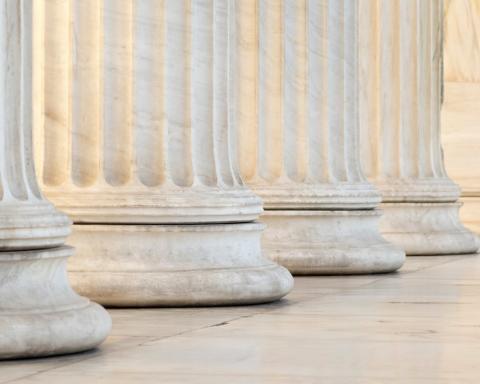Anyone who has been involved with requests to admit in Illinois state courts should be familiar with the rigid requirements that have developed under Supreme Court Rule 216 for compliance by the responding party. Indeed, many would argue that the rules regarding responses to requests to admit have become traps for the unwary, to say nothing of fertile ground for malpractice claims. But the First District™s recent decision in Vision Point of Sale, Inc. v. Haas, No. 1-05-2320, 2006 WL 1726495, at *1 (1st Dist. June 23, 2006) could be interpreted as having opened the door to a much broader interpretation of a trial court™s discretion to grant additional time to properly respond to requests to admit. How trial and appellate courts choose to interpret this case could have significant consequences for parties that seek to rely on this discovery tool.
The emphasis on strict compliance with Rule 216 is often traced, at least in part, to the Illinois Supreme Court™s holding in Bright v. Dicke, 166 Ill.2d 204, 652 N.E.2d 275 (1995). There, the Supreme Court acknowledged that, where a party fails to properly respond to requests to admit within the 28 days provided by Rule 216, trial courts are vested with discretion under Supreme Court Rule 183 to grant additional time for the responding party to submit a compliant response. Id. at 276. But this discretion, cautioned the court, does not come into play under the rule unless the responding party can first show good cause for the extension. Id. at 277. And a lack of prejudice to the requesting party, the only justification proffered by the responding party in Bright, does not amount to good cause. Id. at 276. The court was not subtle when it addressed the manner in which a trial court should exercise its discretion when considering whether a party should receive additional time to comply with Rule 216:
Under Rule 183, the general rule pertains: the burden of establishing grounds for relief is on the party requesting the additional time. To hold otherwise would be tantamount to saying that litigants are free to disregard our rules so long as the opposing side cannot show harm. Such an approach is wholly unacceptable. Nonmoving parties such as Bright should not be required to justify application of a rule before it will be given effect. The rules of court we have promulgated are not aspirational. They are not suggestions. They have the force of law, and the presumption must be that they will be obeyed and enforced as written. Id. at 277-78.
On balance, Bright™s progeny has interpreted the requirement that a party show good cause before receiving additional time to properly comply with Rule 216 very narrowly, and parties that have failed to submit fully-compliant responses within 28 days of service have done so at their peril. Two recent examples:
- In Larson v. O™Donnell, the defendants cited a laundry list of excuses in support of their motion for additional time to properly respond to the plaintiff™s requests, including personnel changes at the defendant organization, the fact that documents necessary to respond to the requests were located off site, the amount of time required to respond to 80 requests, the fact that the requests went to central issues in the case, and the plaintiff™s failure to allege prejudice from a late response. 361 Ill. App. 3d 388, 395, 836 N.E.2d 863, 868-69 (1st Dist. 2005). The court rejected each of these, noting that mistake, inadvertence, and neglect cannot constitute the sole basis for a good cause determination. Id. at 869. The court further noted that nothing prevented the defendants from filing a request for additional time within the 28-day time limit, or asserting that the requests were overly burdensome or improper. Id.
- Additionally, in Robbins v. Allstate Ins. Co., 362 Ill. App. 3d 540, 544, 841 N.E.2d 22, 26 (2d Dist. 2006), the Second District affirmed a trial court™s decision to deem requests admitted where the responding party was proceeding pro se at the time he served his responses to the plaintiff™s requests. The plaintiff technically submitted a response within 28 days, but failed to provide a proper verification as required by Rule 216. Id. at 26. The appellate court rejected the plaintiff™s contention that he was œa man of limited education and no understanding of the process or its consequences, and determined that it was bound by precedent to adhere to the plain terms of Rule 216. Id. at 27.
These decisions are representative of a number of cases which emphasize that strict compliance is the rule when responding to requests to admit in Illinois. Vision Point of Sale, Inc. v. Haas
On June 23, 2006, the First District handed down its decision in Vision Point of Sale, Inc. v. Haas. No. 1-05-2320, 2006 WL 1726495, at *1 (1st Dist. June 23, 2006). While involving somewhat unique facts, the language the court used in its approval of a trial court™s decision to grant a responding party additional time to file a proper response to requests to admit could be interpreted very broadly, and construed as a retreat from the policy of strict adherence that has governed in recent years.
In Haas, the plaintiff submitted a response to the defendants™ requests to admit that was not signed by the plaintiff, although one of the plaintiff™s officers did provide a verification as required by Rule 216. Id. at *1. The plaintiff also failed to file its responses with the court as required by Cook County local rule. Id. at *2. The plaintiff attempted to cure this deficiency by later filing its original responses, as well as by filing and serving a second set of responses which were signed by one of the plaintiff™s officers, well after the 28-day time limit. Id. at *1. The trial court found that the only responses filed within the 28-day limit did not comply with Rule 216, and granted the defendants™ motion to deem all of the requests admitted. Id. at *2.
Shortly thereafter, the plaintiff petitioned for a rule to show cause against defendant Legacy, Inc. Id. Legacy had been sued, along with Haas, a former employee of Plaintiff Vision Point of Sale, Inc., for, among other things, theft of trade secrets. Id. at *1. The trial court had issued a preliminary injunction requiring Legacy to purge its computers of all information obtained from Haas, and determined that its order would be best effectuated by requiring Legacy to purchase new computers and to pay a substantial portion of the cost for plaintiff™s experts to oversee the file transfer. Id. In its petition for a rule to show cause, the plaintiff sought sanctions against Legacy for failing to pay expert fees as ordered. Id. at *2. When confronted regarding what the court later termed Legacy™s settled policy of recalcitrance toward the earlier order, Legacy did not deny failing to pay, and instead asserted that the order was issued in error and should not have to be followed. Id. The court determined that if it were to allow the defendant to challenge the merits of the order after willfully disobeying it, equity would be served if it vacated its earlier order, which had inured to the defendant™s benefit, deeming all of the defendants™ requests admitted. Id. at *3. Essentially, the trial court granted the plaintiff additional time to file a compliant response to the defendants™ requests to admit as a sanction for one defendant™s failure to follow a separate court order.
After denying the defendants™ motion to reconsider, the court certified the following question for review:
In determining whether good cause exists under Supreme Court Rule 183 for the grant of an extension of time to remedy an unintentional noncompliance with a procedural requirement, may the Court take into consideration facts and circumstances of record which go beyond the reason for the noncompliance. Id. at *3.
The First District began by noting that, on its face, Rule 183 contains no limitation as to the factors that a court can consider in determining whether to grant an extension of time for responding to requests to admit. Id. at *4. The court stated that the trial court is vested with discretion to grant extensions under Rule 183, and that it had found no authority limiting permissible considerations in the exercise of that discretion to the causes for the delay. Id. at *5. Ultimately, the court found no error in the trial court™s consideration of the defendant™s refusal to follow a separate order as a factor in its decision to grant the plaintiff additional time to file a proper Rule 216 response. Id. The court sought support from cases in other jurisdictions that have permitted late filings for good cause, and concluded that Illinois courts have authority to consider the responding party™s good faith, the conduct of the party requesting admissions, especially in regard to other discovery, and the length of the delay beyond the statutory deadline, as well as any other factors that bear on the balance the court must strike between the need for efficient litigation and the interest of achieving substantial justice between the parties. Id.
Interestingly, the court relied on two pre-Bright decisions, and cited language from each that runs contrary to one of Bright™s key holdings that it is fundamentally improper to put the burden on the requesting party to demonstrate that it would be prejudiced by the court allowing a late filing. Id. (citing Sims v. City of Alton, 172 Ill. App. 3d 694, 699, 526 N.E.2d 931, 935 (5th Dist. 1988) ([P]laintiffs have not shown that the allowing of defendant to file a late response would prejudice them) and Bluestein v. Upjohn Co., 102 Ill. App. 3d. 672, 677, 430 N.E.2d 580, 584 (1st Dist.1981) ([A]ny fact as to which the plaintiff could show prejudice because of the late filing would be deemed admitted)). Indeed, it was the suggestion that the requesting party should be required to show prejudice before a court denies a request for additional time that prompted the Supreme Court™s harshly-worded rebuke in Bright, excerpted above. But the broad language in Haas appears to invite some form of balancing test likely under the rubric of achieving substantial justice between the parties which would seem to necessarily involve consideration of the relative prejudice to the parties should an extension of time be granted and the requests not deemed admitted. Assuming that nothing stands in the way of a requesting party proving the facts sought to be admitted by other means at trial, it would seem difficult for the requesting party to ever show prejudice from a court™s decision to grant additional time. In other words, a balancing test would seem to inherently favor the non-compliant responding party. So if a trial court does weigh relative prejudice in its consideration of whether to grant additional time to file a proper response under Rule 216, it would seem to place a burden of the type so strongly eschewed in Bright on the requesting party, as well as encourage less-than-strict compliance on the part of the part of the responding party.
The Haas opinion itself is actually quite simple and direct, and does not read like it is intended to usher in a new era in the interpretation of Rule 216. But its broad language certainly allows for that conclusion. It will be important to monitor subsequent appellate activity involving the case, and, more immediately, focus on whether trial courts take a more limited view of Haas, or construe it as a genuine shift in policy, impacting all parties that serve and respond to requests to admit in Illinois state courts.








